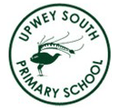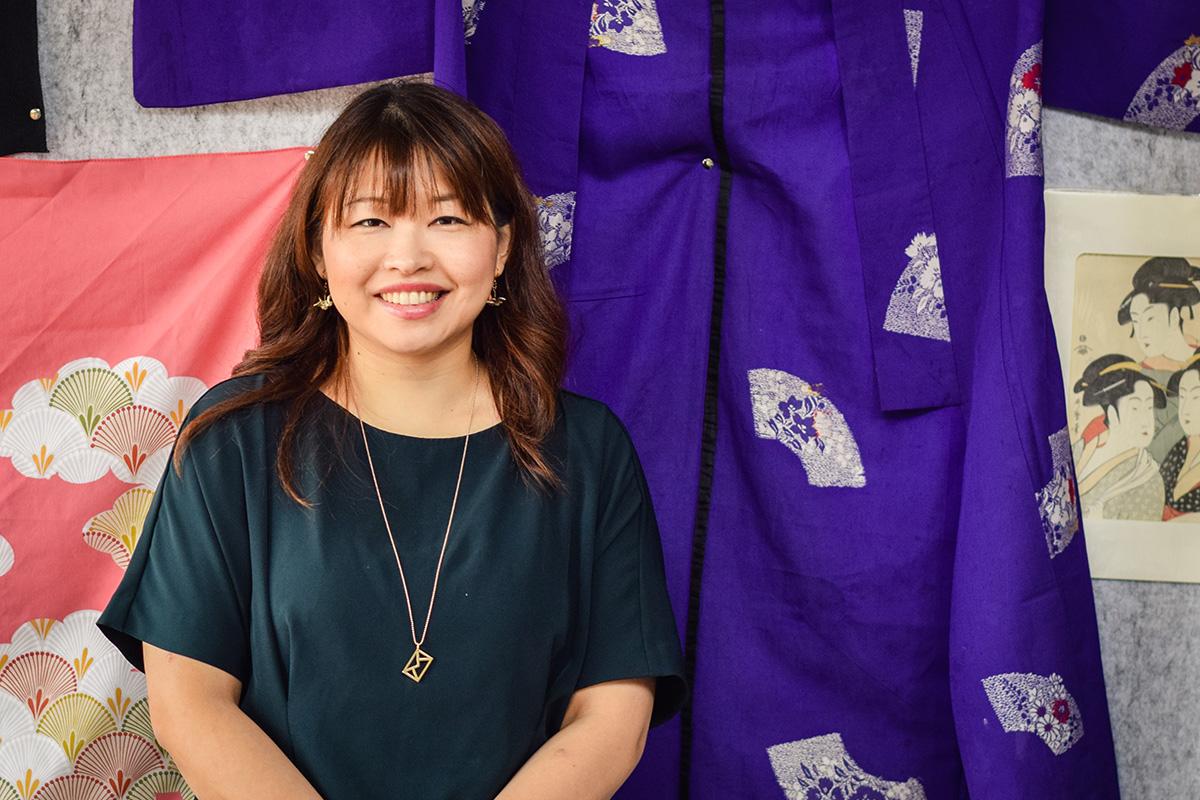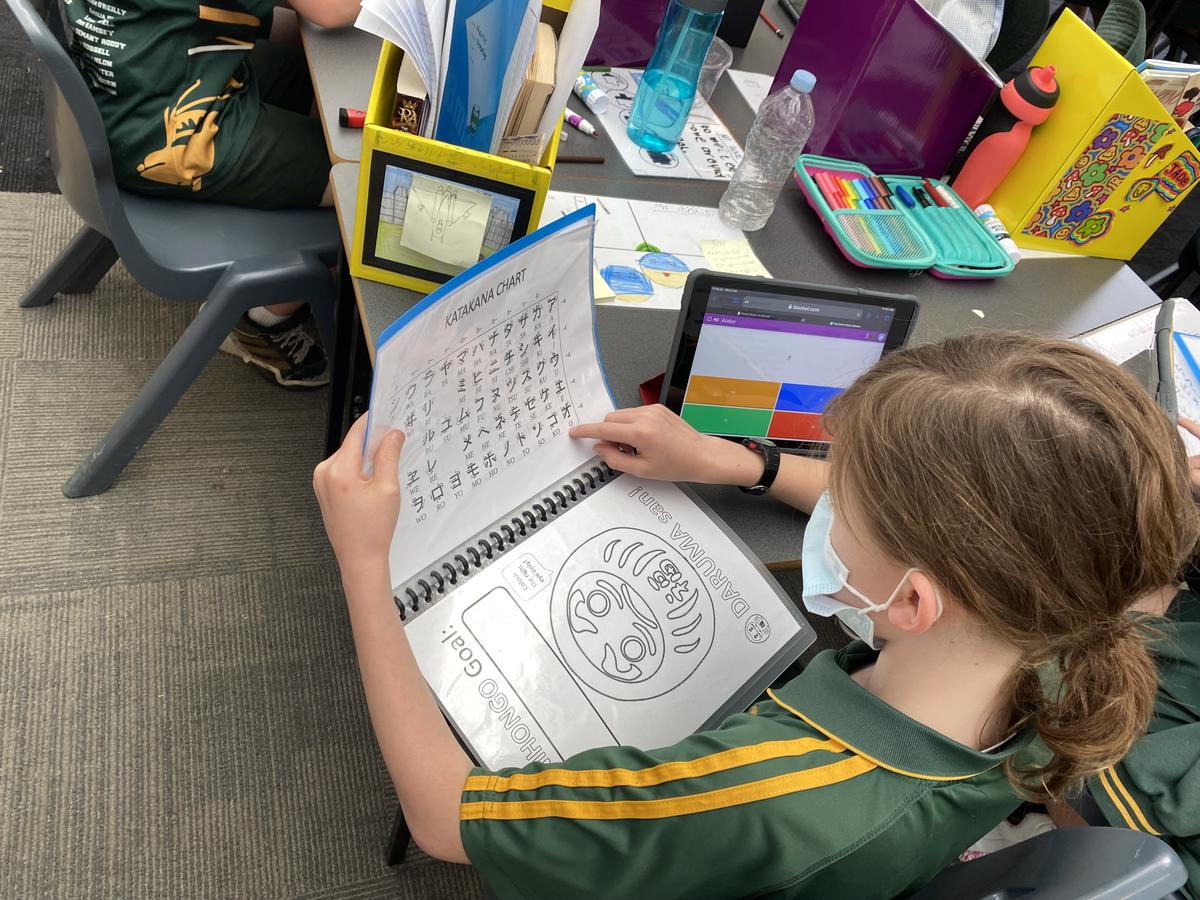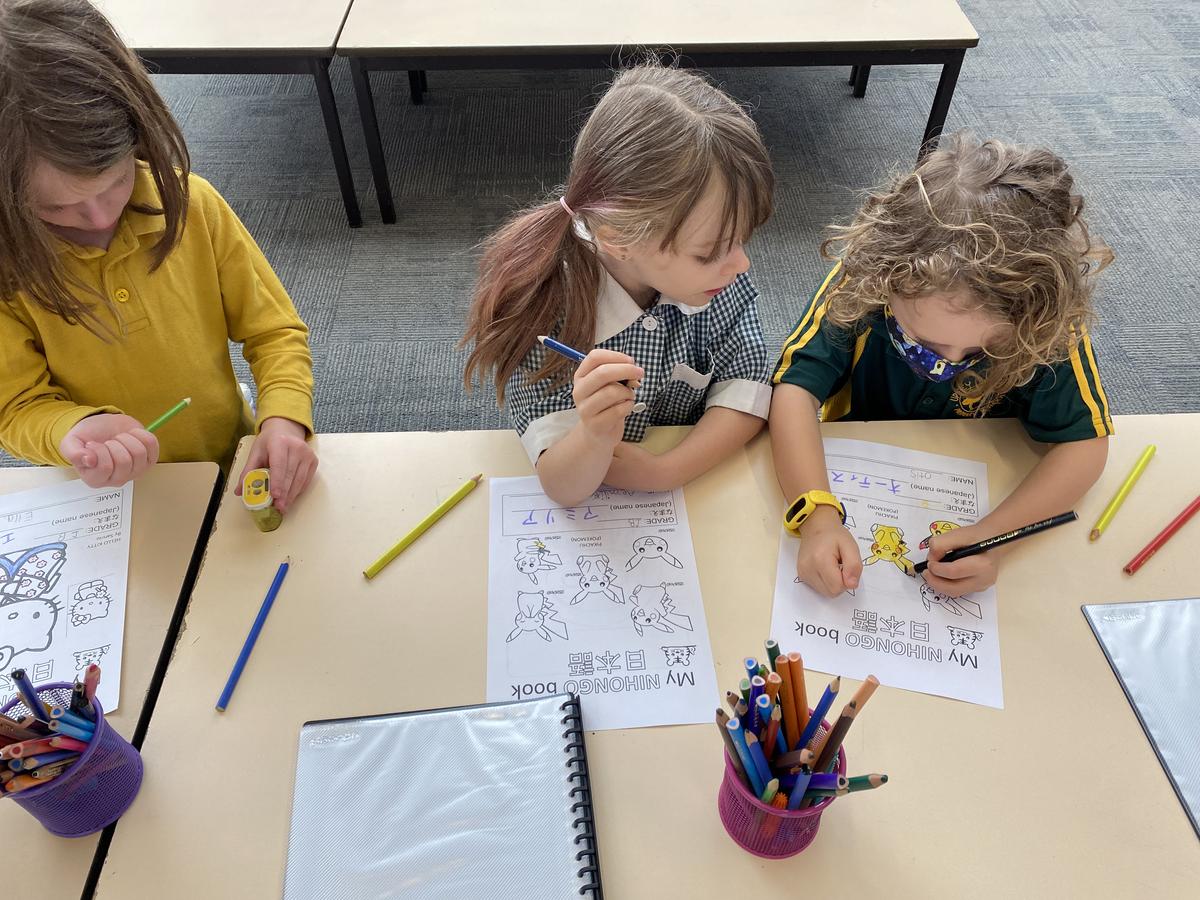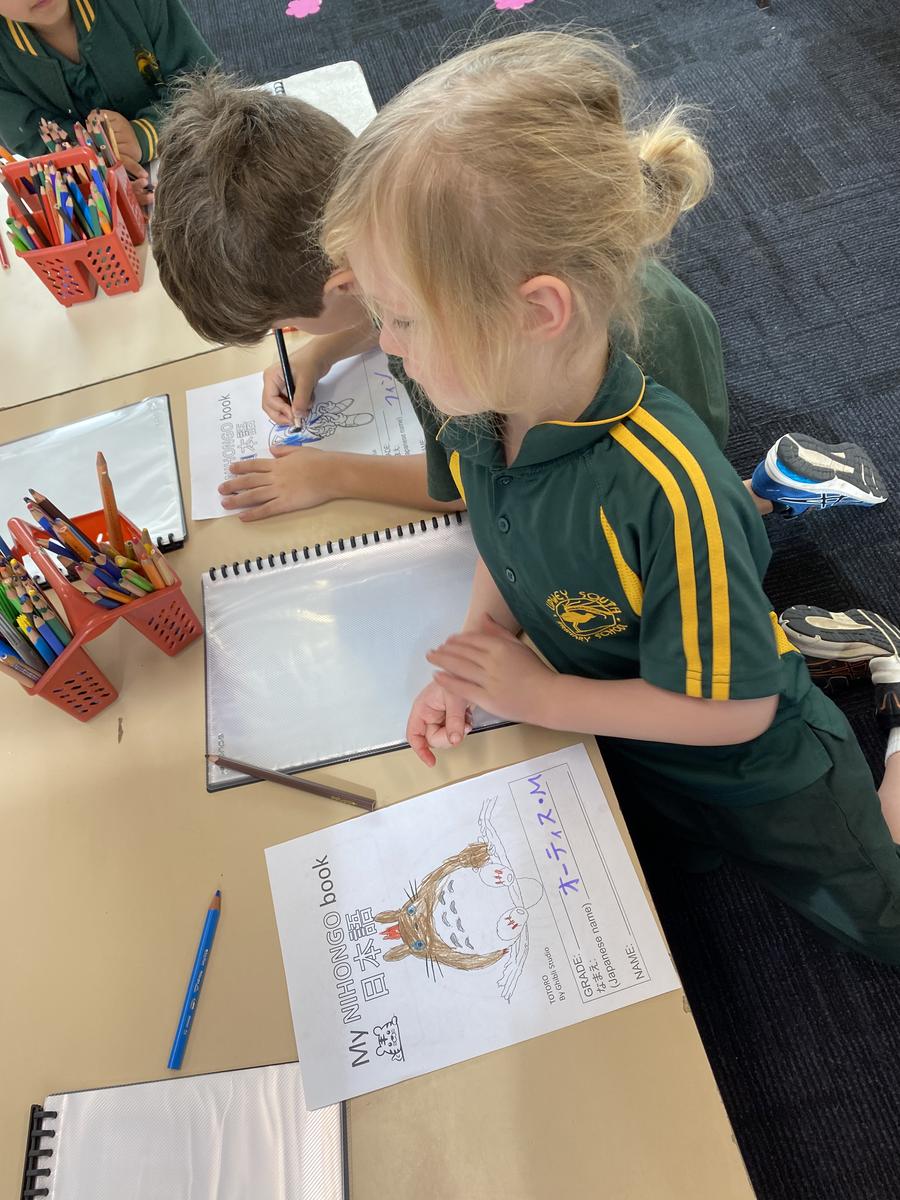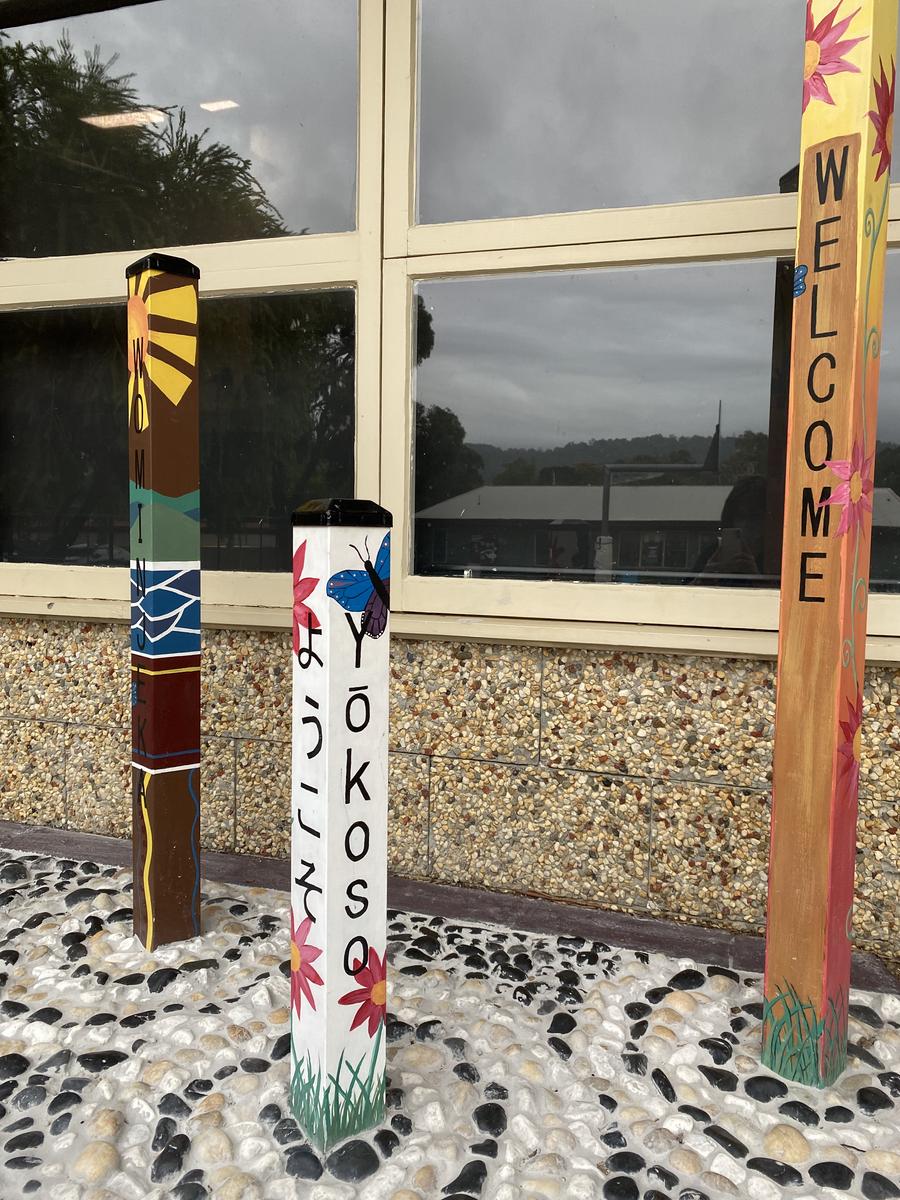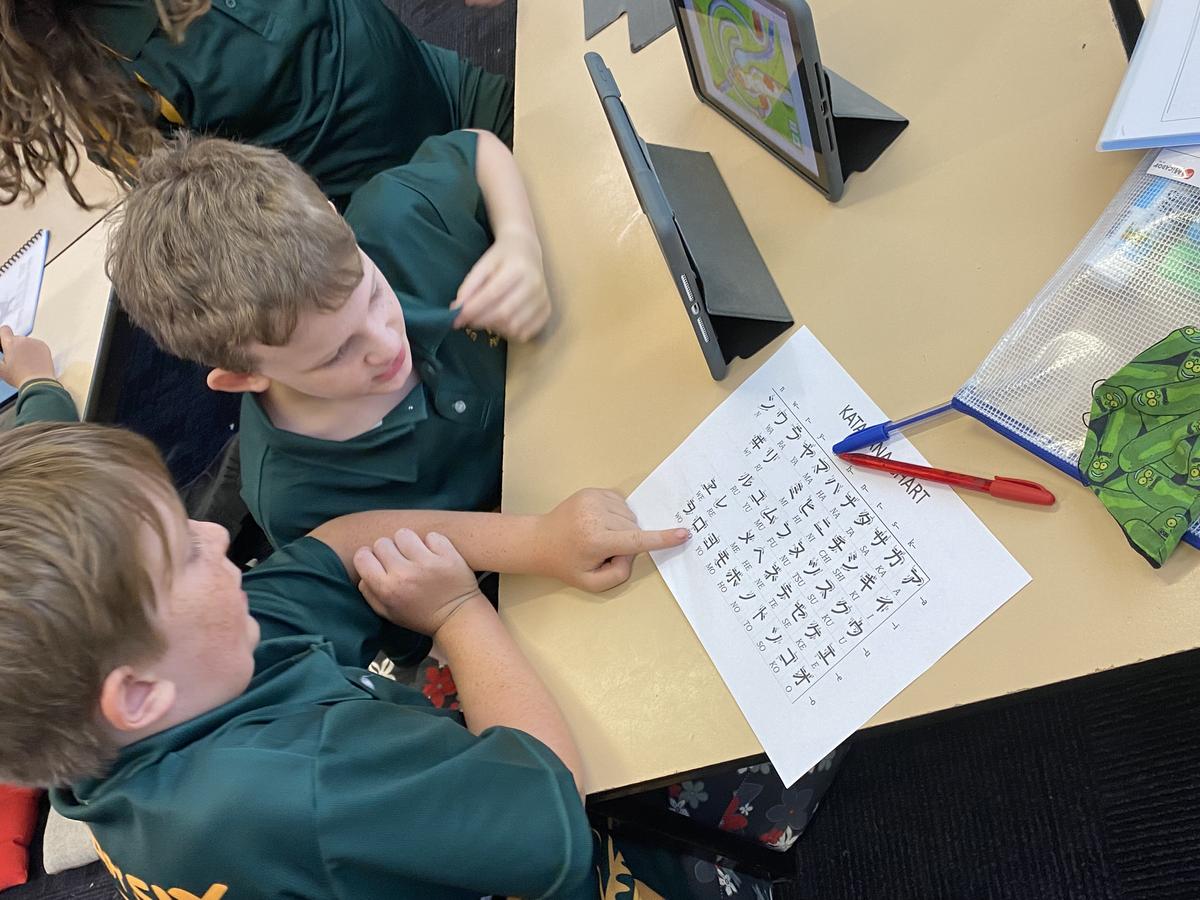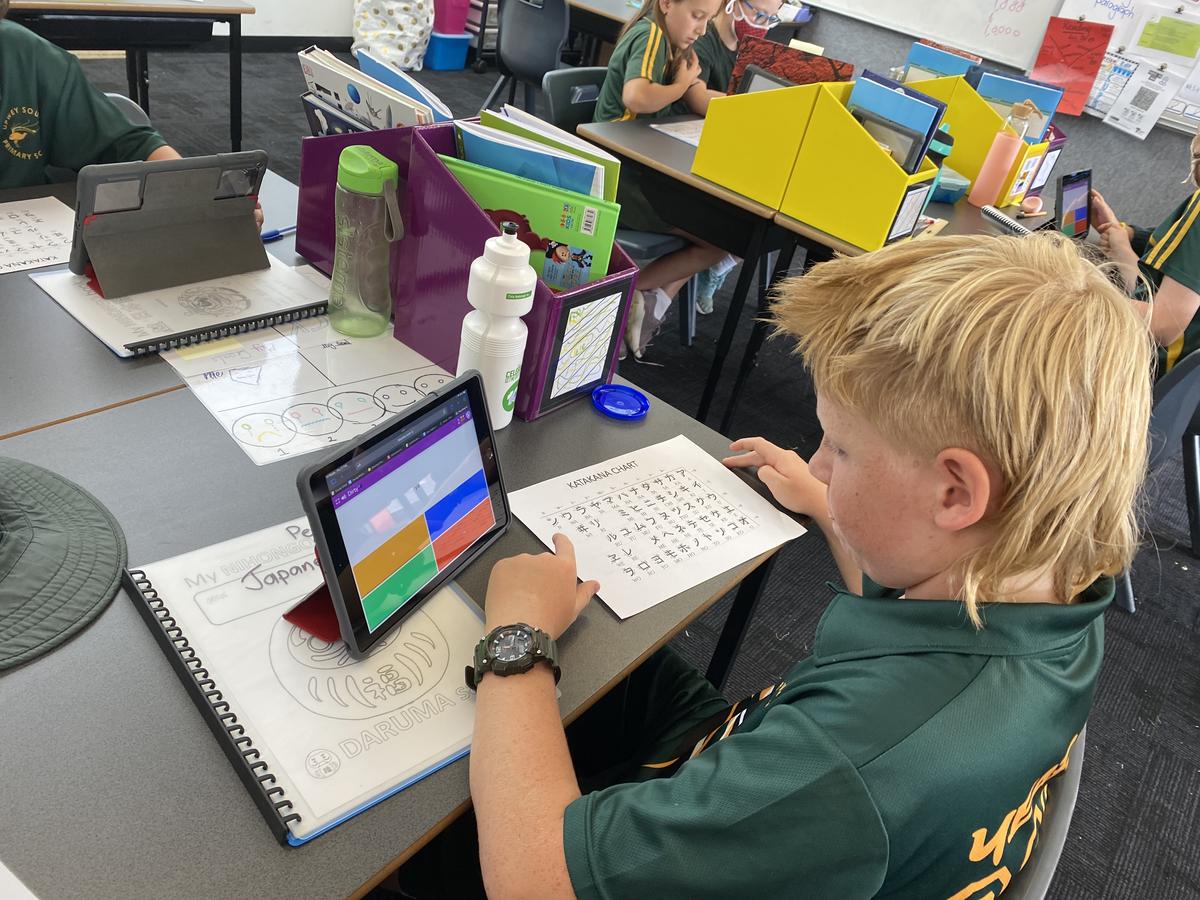Languages- Japanese

Communicating with the Specialist Team
We look forward to partnering with you in 2022, and welcome your input:
Sensei Masae Uekusa (Japanese) Masae.Uekusa@education.vic.gov.au
Konnichiwa, minasan! (Hello, everyone!)
‘YOKOSO’ (Welcome) to the Upwey South Japanese Room!
The following are the Japanese activities our students worked on during week 3 and 4.
Foundation:
Foundation students started learning about Japan and the language through a meaningful class discussion involving a world map, some Japanese food and their favourite ‘anime’ and game characters. In their very first lesson, they learnt a Japanese greeting song with 4 important phrases, ‘genki desu ka (How are you?)’, ‘genki desu (I am well/good)’ and ‘genki janai desu (I am not well)’. I feel very happy whenever I hear lots of ‘konnichiwa!’ and ‘Masae sensei!’ outside the Japanese room. Fantastic work!
Year 1&2:
In term 1, Year 1 and 2 students started revising their Japanese name and decorating their Japanese book with their favourite character(s) or images related to Japan. The students also started to practise family words such as ‘かぞく’ (kazoku: family), ‘おじいさん’ (ojiisan: grandfather), ‘おばあさん’ (obaasan: grandmother), ‘おとうさん’ (otousan: father), ‘おかあさん’ (okaasan: mother) through a Japanese family song and digital flashcards.
Year3&4:
Year 3 and 4 students started off their new term with the revision of their Japanese name, decorating their Japanese folder cover and setting a SWPB goal on the Japanese traditional goal-setting, ‘DARUMA’ page. As the students selected a focus goal for term 1 from the three SWPB values, they learnt the values in Japanese. The SWPB values in Japanese are; ‘けいい’ (keii: respect), ‘たちなおり’ (tachinaori: resilience) and ‘せきにん’ (sekinin: responsibility).
Year 5&6:
In term 1, Year 5 and 6 students started learning about the history, definition and features of ‘ANIME’ and ‘MANGA’. As they revised their name in ‘Katakana’ script, they came to learn Manga and Anime involved a lot of onomatopoeia (words to imitate sounds). The students quickly worked out the strategies to read Katakana letters on the phonetic chart by reinforcing the same strategies to read ‘Hiragana’ script. Well done!
Arigatou
Masae-sensei
